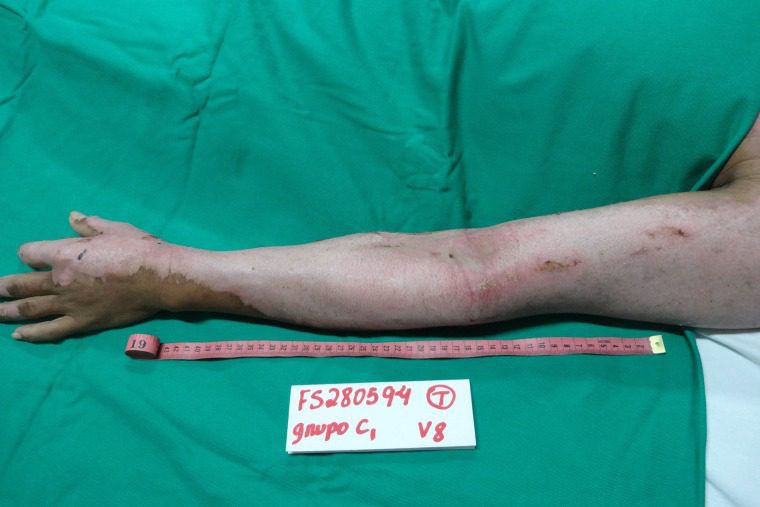In an unexpected and unintentional ode to Aquaman, a rather unusual biomaterial has been trialed in Brazil, where it’s been used to great success in the treatment of burns. If something seems fishy to you, that’s probably because it is: the secret ingredient in all this is tilapia, the freshwater fish native to Africa but abundant in Brazil’s rivers.
In the last few years, researchers have experimented with using its skin to aid healing during skin grafts. For example, back in 2019, the unorthodox treatment was documented in a case report, which detailed its efficacy in treating burns caused by a gunpowder explosion.
Thanks to its high type I collagen content, tensile strength, and similar morphology to human skin, tilapia skin makes an ideal piscine plaster. It “prevents loss of moisture and proteins on the wound and it stays bonded to the bed of the wound until it heals over,” Dr. Edmar Maciel, one of the study’s authors, told The New York Times last year. This helps to speed up wound recovery and protect against contamination.
The study describes the case of a 23-year-old man, who had sustained burns to his arms, face, and torso, and was helped in his recovery by the use of Nile tilapia fish skin. First, the skin was chemically sterilized, treated with glycerol, and irradiated, before being tested for bacteria and fungi and refrigerated, to limit the risk of infection.
Once the wounds on the man’s arms had been cleaned and the necrotic (dead) and fibrinous tissue removed, the treated tilapia skin was placed on top. Silver sulfadiazine cream, commonly used on burn patients in Brazil, was added, followed by gauze and bandage, which were removed every 72 hours in the first week to ensure the tilapia skin had adhered to the wound.
By days 12 and 17, reepithelialization – the formation of a new skin barrier between wound and environment – had occurred for the right and left arm, respectively. At this point, the tilapia skin, which had dried and loosened from the burn, was peeled away to reveal the healed skin. No side effects were noted.

Previously, human, pig, and even frog skin has been used in skin grafts, but at Brazil’s public hospitals, these are not always available. Instead, gauze bandages, which require regular and painful changing, are most often used. Tilapia, however, are a dime a dozen in Brazil’s rivers, so could be a valuable, and sustainable, alternative.
“The fish skin is usually thrown away, so we are using this product to convert it into something of social benefit,” Odorico de Morais, a professor at the Federal University of Ceará, told Reuters in 2017.
It may also be a more cost-effective option: one 2022 study found that the unlikely biomaterial costs just $1 per patch, excluding transportation and labor expenses.
And its use in skin grafts is not just a one-time (or one-species) thing. Tilapia skin has also been used to treat pediatric burns, and has even helped our four-legged friends, having aided the healing of a bite wound in a miniature dachshund.
Suddenly it’s not sounding (quite so) fishy anymore.
The study is published in the Journal of Surgical Case Reports.
Source Link: Tilapia Skin Grafts Won't Turn You Into Aquaman But They May Save Your Skin